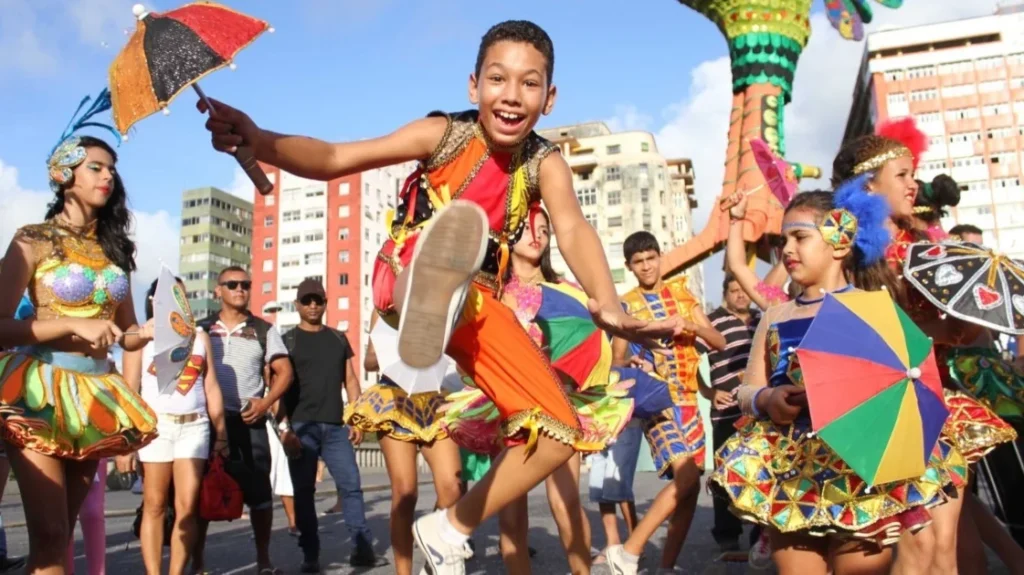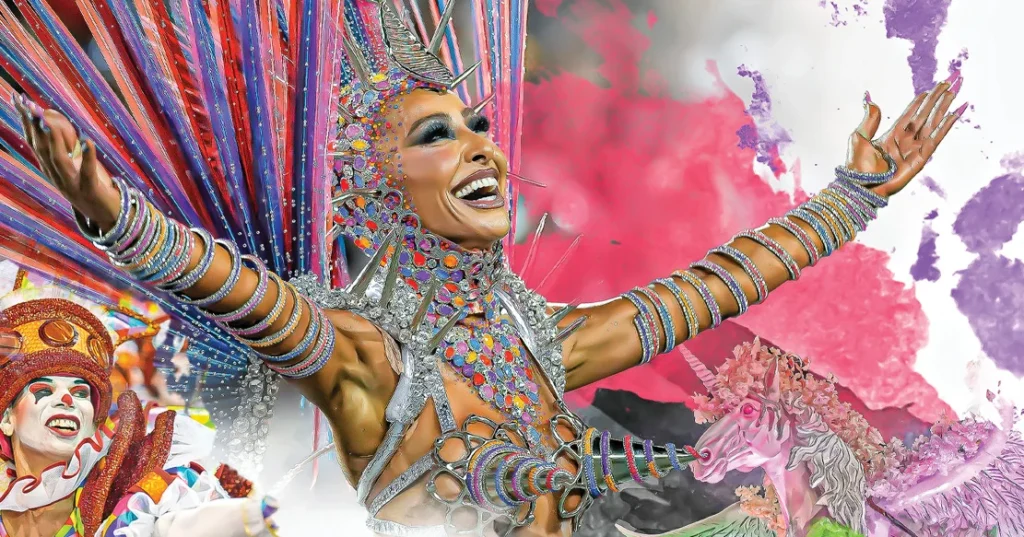Brazilian Carnaval is more than just a festival – it’s a bombastic celebration of culture and color fully reflecting the spirit of Brazil. With samba rhythm, extravagant parades, and luxurious costumes, it is one of the most exciting festivals in the world. The audience can experience everything from the vibrant samba style to the colorful processions, and the following paper will illustrate the soul of Brazilian Carnaval and the truly unforgettable experience that awaits all comers.
The Origins of Brazilian Carnaval
A Historical Overview
Brazilian Carnaval has a long history and goes back to European colonial times. Carnaval has its roots as a food festival, a feast before the 40 days of Lent to celebrate and eat as much food as possible before 40 days of abstaining and fasting, which is a norm according to Christian tenets. For years, this festival evolved into what it is today, coalescing with Afro-Brazilian culture, indigenous traditions, and local practices gained a Brazilian cultural phenomenon.
The Influence of Samba
The core of Brazilian Carnaval is samba, which is a music and dance style that developed in the early 20 th century in the largely Afro-Brazilian zone of Rio de Janeiro. Samba’s distinct rhythm and body action established the foundation of the Carnaval parade, with samba schools competing in performances characterized by costume quality, topic, and melody composition.

The Pulsating Energy of Brazilian Carnaval
The Samba Parade in Rio de Janeiro
The grand finale of Brazilian Carnaval is the Samba Parade in Rio de Janeiro’s Sambadrome. Every year, samba schools present a new theme, expressed through their costumes, floats, and choreographies . This event is all but friendly competition; rather, it is a nationwide broadcast watched by millions of viewers eager to see what this year’s spectacle has to offer.
The Street Festivals
The street in Brazil’s cities is equally full of people dancing heartily. The blocos de rua are democratically inspired, as they call anyone and everyone to be greeted on-site by dancing and singing samba bands. This arrangement, which in cities such as Salvador and Recife can generate millions of revellers is accessible to all, provided that one does not need a ticket or an exclusive access permit.
Cultural Expression Through Costumes and Music
The artistry of the costumes
The Brazilian Carnaval is renowned for its spectacular costumes. The participants, called foliões, spend months developing the costumes, which are usually covered in feathers, sequins, and bright colors. These outfits are not only a showcase of ingenuity but also tell tales. More specifically, the samba schools’ year theme depicts the background of their costumes.
The music
Music is the primary sustenance of the Brazilian Carnaval . It features samba and other types of music like axé, frevo, maracatu, among others . Every region partying displays its unique music, style, and dance type. Therefore, Brazilian Carnaval is a composite music festival of different.
The Social and Economic Impact of Brazilian Carnaval
A means of supporting local economies. In addition to that, the roots of the participants have a chance to make money. The money spent on hotels, food, and transportation from tourists and the money that the students earn from the carnival are reported to be major contributors to the country’s annual GDP. Additionally the dance and costume type businesses, as well as security, benefit greatly from this event. It provides an outlet for social/cultural commentary. The samba school presents the best venue for protest.
Challenges and Controversies
Safety and Security
Despite the joyous celebrations, Brazilian Carnaval faces challenges such as crowd management and crime. Each year, efforts are ramped up to ensure the safety and security of attendees, with increased police presence and safety campaigns.
The Environmental Impact
The environmental impact of Brazilian Carnaval is another growing concern. The aftermath of the festival often leaves streets littered with debris. Initiatives to make Carnaval more sustainable are on the rise, focusing on recycling costumes and reducing waste.





